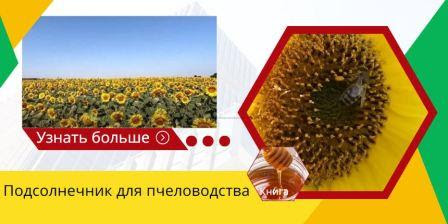Watermelon as a honey plant
Watermelon honey plant, whose juicy fruits are loved by everyone, is often grown in the southern regions. Let us consider in more detail how watermelon is useful for bees, how bees are useful for watermelon. How good is a watermelon honey plant.
Content
- Description of the honey plant watermelon
- Watermelon as a honey plant
- When does a watermelon bloom like a honey plant?
- Watermelon honey productivity
- The benefits of watermelon for bees
- Pollination of watermelon by bees
- Honey from watermelon
- Watermelon fruits
...
.
...
Description of the honey plant watermelon
Honey plant watermelon Latin name Citrullus vulgaris Schrad. it is an annual monoecious plant with a creeping stem that reaches a length of 2 - 3 meters and branched tendrils. Watermelon is grown in large quantities in the Central Asian republics (Kazakhstan, Uzbekistan, Turkmenistan, Tajikistan, Kyrgyzstan), in the Caucasus, in the southern regions of Russia and Ukraine, in Moldova, in the countries of the Balkans and the Mediterranean, a lot of watermelons are grown on other continents - in Australia and North America and many other regions.
In Bulgaria, table and fodder watermelons are grown. Forage watermelon is used as a succulent feed for farm animals. The largest watermelon growing areas are located in Pleven, Vrachansky, Velikotarnovsky, Mikhailovgrad, Pazardzhik, Plovdiv and other regions.
Watermelon leaves are large, deeply three-five-parted, with pinnately lobed rounded lobes.
Watermelon flowers are unisexual, light yellow.
Watermelon fruits are large, with red juicy sweet pulp.
Watermelon as a honey plant
When does a watermelon bloom like a honey plant?
When does a watermelon bloom like a honey plant and for how long? The flowering period of the honey plant watermelon falls on July - August, as a rule, watermelon begins to bloom 40 - 50 days after germination. It should be noted that watermelon blooms like a honey plant for a long time, about 50-60 days. The flowering period of watermelon as a honey plant depends on the weather. If the weather is dry and hot, the flowering period of watermelon lasts more than 30 days, while the flowers release nectar only in the first half of the day. If the weather is warm and humid, the flowering period of watermelon as a honey plant is extended to 2 months and the release of nectar lasts all day.
Considering that honey collection from watermelon occurs during a period when it is very hot, the beekeeper should take a number of measures aimed at preventing the negative impact of high temperatures on bees.
Watermelon honey productivity
How much honey can bees collect from 1 hectare of watermelon. Each watermelon flower, whether male or female, releases 05 - 0.7 mg of sugar in the nectar. Watermelon honey productivity is not large and is in the range of 15-20 kg/ha. Despite the low honey productivity of watermelon, it is a valuable plant for beekeeping.
The benefits of watermelon for bees
If the honey productivity of watermelon is small, then why is watermelon valuable for beekeeping, what is its use for bees?
As you can see, the flowering period of watermelon as a honey plant is very long, and the honey productivity is small, but it should be borne in mind that during the flowering period of watermelons there may not be other honey plants, and watermelon is grown on large areas, which provides the bees with a small honey collection, and if the field is littered even in a small degree of weeds such as thistle or colza, this will allow the bees to collect a good harvest of honey.
In addition, watermelon honey plant is also a pollen plant, which allows bee colonies to collect the pollen that they need to feed the brood and the colony does not decrease.
Bees actively collect juice from broken watermelons, but this is discussed in more detail below.
Pollination of watermelon by bees
In a honey plant, watermelon flowers are heterosexual and the wind does not transfer pollen from male flowers to female flowers, so bees are required for full pollination of watermelon. If there is no pollination in the watermelon, then a large number of empty flowers develop, that is, the flowers fall off without giving an ovary, or there may be defective fruits. Therefore, in order to obtain a good harvest of watermelon, pollination by bees is necessary and this is not so simple, it is not enough just to take the hives with bees to the field, there are nuances of how to properly pollinate watermelon by bees.
How to pollinate watermelon with bees.
Honey from watermelon
What kind of honey bees collect from watermelon? Watermelon honey is yellowish, quickly crystallizing, and therefore it should not be left to bees for the winter.
Watermelon honey should not be confused with the liquid that bees produce by taking the juice from broken watermelons and processing it. Such honey is not considered natural honey, however, if the wintering is small, then the "honey" obtained in this way can be left to the bees as winter food. Experiments carried out in the USSR in 1940-1950 showed that bees may well overwinter on such food in the southern regions. So it can reduce the beekeeper's money spent on sugar and the labor cost of making winter feed syrup. Also, such "food" at the end of summer will help prepare families for the winter.
Watermelon fruits
Fruit pulp and juice quench thirst well in febrile conditions and have a strong diuretic, mild laxative, choleretic and anti-inflammatory effect. The seeds have hemostatic and antihelminthic properties. In folk medicine, the fruits of watermelon are used for dropsy and jaundice. Watermelons are very useful for patients with sclerosis, arthritis and gout.


Комментариев нет:
Отправить комментарий